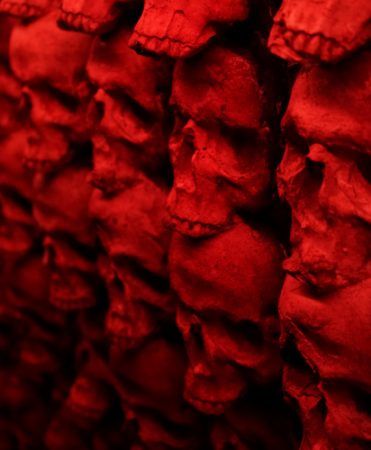Like many other folktales of the arctic region, Yup’ik folklore emphasized keeping children safe from the elements and the dangers of being alone and ill-prepared. This folktale is no different, but it definitely gave me goosebumps the first time I heard it over an early-winter bonfire.
A very long time ago, in the Cape Prince of Wales, in a village off the shore, there once lived a poor orphaned boy with no one to look after him—because he had no one to care for him, he often found himself being forced to do the bidding of all the other villagers. Every single villager treated him cruelly, especially when they all gathered in the kashim—the men’s communal building where they gathered to stay warm, eat, and keep company during the cold winter months. One particularly blustery night, while the snow was falling harshly upon the village, the other villagers told him to leave the kashim to see if the weather was getting any worse. Due to the fact that he was an orphan, he had no one to make him skin boots or warm clothes, so he objected. It was too cold and the boy did not wish to go outside but was driven out of the kashim anyway. Upon returning inside, he told the others that it had stopped snowing, but the weather had gotten even colder. Every so often, the men would drive him back out into the elements, just to torture the poor boy.
Finally, the boy came in, stating that he had seen a ball of fire that looked like the moon coming over the hill to the north, but the men simply laughed at him. They accused him of seeing things and told him to go back out and to look again, that he might see a whale coming over the hill instead. When the boy quickly returned inside, he looked scared and reported that the red ball had come nearer to the kashim and that it was right outside of the house. Once again, his words were met with laughter, but the boy was truly frightened and hid within the kashim. As the men were still laughing, a large fiery figure appeared on the gut-skin covering over the vent in the ceiling and it appeared to be dancing. The men were both scared and captivated by the figure and did not notice the figure creeping through the passage into the room on its elbows and knees. The figure was a frightful sight—a human skeleton that with a brief wave of its hand somehow caused all of the men in the room to follow it, as it crawled through of the passage to the outdoors. Under the spell of the skeleton, the men followed it to the edge of the village until every last one of them had died of the elements, at which point it vanished.
Other villagers returned from fishing to find the rest of the men of the village had died, bodies scattered over the snowy landscape. They entered the kashim finally, finding the orphan boy who recounted the entire story and how the men had died—investigating where the tracks of the skeleton had come from, they followed the tracks through the snow, up the side of the mountain. The tracks ended when they came upon an ancient gravesite—it was the grave of the boy’s father.

Georgia-based author and artist, Mary has been a horror aficionado since the mid-2000s. Originally a hobby artist and writer, she found her niche in the horror industry in late 2019 and hasn’t looked back since. Mary’s evolution into a horror expert allowed her to express herself truly for the first time in her life. Now, she prides herself on indulging in the stuff of nightmares.
Mary also moonlights as a content creator across multiple social media platforms—breaking down horror tropes on YouTube, as well as playing horror games and broadcasting live digital art sessions on Twitch.


